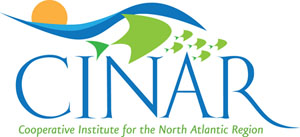‘Economic, demographic imbalance’ described by study
By Tom Groening
(From The Working Waterfront)
Penobscot Bay is a distinctive estuary, easily recognized even in a photo taken from space. According to a recent study, it is “the largest, most ecologically diverse, island-filled bay in the Gulf of Maine.”
Yet the people who live in the two-dozen towns that rim the bay do not see themselves as part of a single region, nor is there any unifying government or leadership group. And that lack of cohesion and identity will hinder efforts to combat some sobering demographic trends.
“Socio-economically, this is not a coherent, inter-connected, internally functioning region,” the Planning Decisions Inc. study concluded. The analysis was commissioned by the Island Institute and published in January.
Concern for the region’s ecological well-being may be the first step toward unifying it. Acknowledging the shared natural environment could then usher in regional leadership. And that leadership could take on ensuring a more stable economic future.
First, the here and now.
The Penobscot Bay region relies heavily on fishing, mostly lobstering, and tourism, the study found. It also lags behind the state in household income growth over the 2000-2010 period, and has a declining labor force and more rapidly aging and slowly growing overall population when compared to the state as a whole.
The prognosis isn’t good, the study concluded, because of “a narrowing fishing base, slower economic growth and inadequate connections to new job opportunities.” Those factors “have created an economic and demographic imbalance in the region,” the study asserted.
For the purposes of the study, the bay region is defined as beginning to the south in St. George, and continuing along the shore north to Stockton Springs, at the mouth of the Penobscot River, then east and south from Orland to Brooklin. The region also includes the island communities of Islesboro, North Haven, Vinalhaven, Monhegan, Matinicus and Isle au Haut.
The study suggests a few reasons why Penobscot Bay people and towns don’t identify themselves as one region.
Though Knox and Waldo counties on the west side of the bay share an identity, the eastern bay towns of Hancock County do not readily see connections with them. U.S. Route 1 follows the coast along the west side of the bay, but departs at Orland toward the east.
Yet those coastal towns have much in common, and differ from their inland neighbors. Most actively court tourists; non-native residents outnumber natives; and property values are higher than inland.
And perhaps most significant, residents of those towns tend to vote for Democrats and their political values include supporting environmental protection, land use planning, historic preservation and progressive social policies.
These commonalities may not be enough for the Camden gallery owner, Vinalhaven lobsterman and Castine retiree to care about each other’s fate. But if the three first see how their way of life is threatened by troubling economic trends, they may rally around new leadership.
Despite the lack of self-identity, Penobscot Bay has a distinctive profile:
- Of the state’s ten harbors with the largest fish landings, five are in the region, including the top harbor, Stonington, which saw $47.8 million in landings in 2011, compared to $28 million for the second-place harbor, Portland. The other four in the top ten are Rockland ($23.5 million), Vinalhaven ($17.2 million), Spruce Head ($11 million) and Port Clyde ($8.2 million).
- Almost 26 percent of the houses in the Pen Bay region are seasonal, compared to about 16 percent statewide.
- As a percentage of total retail sales, meals and lodging transactions in the region were about 22 percent compared to 15 percent statewide.
- But there is a troubling trend in tourism. Meals and lodging sales in the Pen Bay region lagged compared to Maine as a whole in the 2004-2011 period.
Other demographic trends also spell trouble.
While household income grew in Maine by about 35 percent from 2000 to 2010, Pen Bay towns saw just a 25 percent increase.
“There is greater dependence on self-employment and retirement income in Penobscot Bay,” the study found. Self-employment income can fluctuate and retirement income often does not keep pace with rises in essential commodities. Population growth is slower in the region than in the state, the study found, which is a problem because Maine is one of the slowest growing states in the country. The average age in the region is rising faster than it is statewide, and Maine is one of the oldest states in the U.S.
Ben Fuller, curator at the Penobscot Marine Museum in Searsport and a registered Maine sea kayak guide who lives in Cushing, sees the bay region in historical and contemporary terms. A century ago, he noted, traveling between the towns that rim the bay was in some ways easier than it is now, as steam and sail vessels made regular trips from Pen Bay harbors to Boston, and from places like Castine on the eastern shore to Camden on the west.
The Chesapeake Bay region may provide a model, Fuller noted. That bay’s shores are in two states, Maryland and Virginia, with Delaware nearby. That region saw leadership ascend over environmental and conservation threats with the formation of the Chesapeake Bay Foundation.
That group coalesced in the mid-1960s over worries about “more boats, more people, more houses, poor sewage treatment [and] dirty industrial discharges,” according to the foundation’s website. By 1970, it had a membership of 2,000 and a staff of three. Ten years later, the foundation had significant clout with both the state and federal government, successfully arguing for changes to environmental law.
Fuller also points to Rhode Island’s Save the Bay as an example of leadership emerging in the face of environmental threats. That non-profit incorporated in 1970 to fight development of industrial energy facilities on Narragansett Bay, including nuclear and liquefied natural gas.
Non-profits like the Island Institute in Rockland, Penobscot East Resource Center in Stonington and Maine Coast Heritage Trust in Brunswick work to sustain and preserve the resource-based economy and the fragile human and natural ecologies. Cultural and educational institutions like the Penobscot Marine Museum and Castine’s Maine Maritime Academy also help define and underscore the region’s ties to the bay and beyond. The Penobscot Bay Regional Chamber of Commerce has begun organizing collaboration between towns that traditionally competed for tourism and development.
Working against the regional identity is the deeply held Maine value of home rule, the idea that one town can fight a development while its neighbor can welcome it. And until there is an extreme external threat — a proposed development that would irrevocably alter the region’s character — that belief will remain. When controversial developments are proposed, rather than evaluating them from the regional perspective, we see familiar fault lines emerge: the haves and have-nots, the natives and the newcomers, the young and the old.
There is another way of understanding ourselves. It would mean taking pride in the bay as a natural resource, and embracing the part it plays in defining our character through its aesthetic and historical richness. If we see the bay as a big part of our identity — just as we see our attractive, vibrant downtowns as part of that identity — we will fight together to protect it and the lives that depend upon it.
The time has come to embrace such an understanding.
Tom Groening is editor of The Working Waterfront.



















